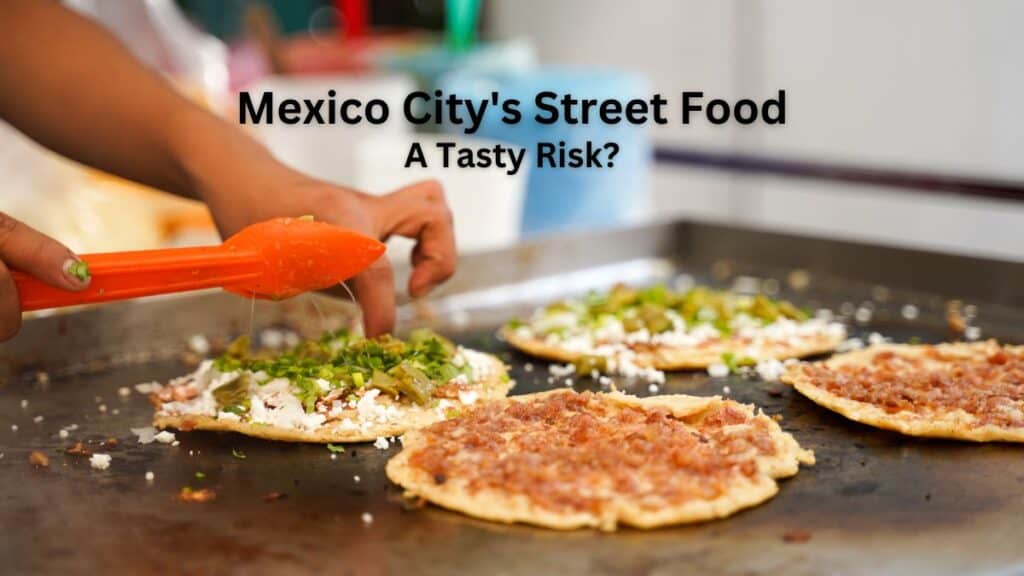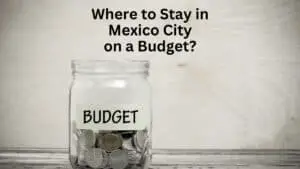Mexico City, together with the entire country, boasts of many things, and one of them is street food. The streets of this city offer authentic Mexican dishes and specialty food that many places in the world try to recreate. As such, many people think a trip to this city will only be complete when they try the street food. Nonetheless, if your concern is safety, you may wonder if trying street food is a tasty risk.
Mexico City’s street food is entirely safe, and it’s highly recommended that you go for these types of food rather than in restaurants. However, when it comes to experience, you’ll find it best to try Mexican cuisine in the street stalls, as they are a staple in the country.
Safety is a primary concern when traveling; the last thing you’ll want is to get sick from eating something unsafe. For this reason, we made this article to ensure it’s safe to try street food in the city and explain why it’s worth doing so. But, of course, we’ll also include some restrictions to ensure you stay moderate with it and avoid problems.
Without further ado, let’s get into it!

Can You Eat Street Food in Mexico City?
As mentioned earlier, you can eat street food in Mexico City. Moreover, you don’t have to worry about its safety since every food stall in the city prepares food well.
One good thing to note about street food in the city is that almost everyone eats at one. As such, you’ll always find plenty of people eating street food anywhere.
For this reason, almost every ingredient used in street food stalls is fresh and cooked within the day. In addition, most owners have sold out all their food, which means the next day will be another batch of freshly made food.
Also, since Mexican street food is easy to prepare, it is usually made when ordered. As such, you can ensure that everything is safe from contamination and that you’re constantly eating freshly cooked meals or snacks.
How Safe Is the Street Food in Mexico?
If you’re not from Mexico, you may think that street food in this city is less safe than the food from a restaurant. However, locals think otherwise. For them, the food from street food stalls is safer than the ones served by fancy restaurants.
As mentioned earlier, most street food stalls in the city begin their day early by preparing what to serve. As such, they go to the local market to buy fresh ingredients since these stalls don’t have a fridge to store what they cook.
For this reason, you can ensure that every food stall in the streets of Mexico City is fresh ingredients from the day.
On the other hand, most restaurants have fridges to store perishable goods, which means most of the ingredients are frozen, not fresh.
Another point is that street food stalls attract more city customers than fancy restaurants. For this reason, most of these stalls can sell out all their food by the end of the day.
As a result, they buy fresh ones every morning, giving you locally sourced fresh ingredients whenever you order food from them.
On the other hand, fancy restaurants only receive a few visitors daily, meaning most ingredients used to make food take days or weeks in their containers.
Generally, you can expect safer, fresher, and better food served at food stalls rather than in fancy restaurants.
Of course, not every street food in the city is safe for consumption. With this simple rule in mind, you’ll choose street stalls that cook fresh meat and serve it quickly.
The places you need to avoid are the isolated stalls where meat and other heated foods are just warm that pose a danger. Such is a place where bacteria multiply. It’s a recipe for a gastrointestinal upset when this is combined with handling money.
To ensure you receive freshly cooked dishes made of fresh ingredients, choose the stalls where customers line up since they are usually sold out by the day’s end.
It’s also best to mingle with locals since they are your best resources when asking for the best street food options.
Food to Avoid in Mexico City
While street food in the city is entirely safe for consumption, you should still be aware of a few restrictions for safety purposes. In general, here are the following food to avoid when trying out street food:
Raw Food
It’s a general rule of thumb to say that raw food is unsafe for consumption. As such, when you’re in Mexico City and trying some street food, you’ll have to ensure the food you ordered is thoroughly cooked.
You can only order and eat raw ceviche, a seafood dish of raw fish. It’s safe because it uses various types of citric acid to kill bacteria.
Chimichangas
Mexico City isn’t the place for Tex-Mex. Mexican dining options are so vast that you could go an entire trip without repeating a dish, whether you’re in for fine dining, regional specialties, or street food straight from the comal. Of course, there’s nothing wrong with Tex-Mex food, but if you’re craving enchiladas with melted cheese and nachos topped with jalapenos, head to Texas.
Ice Cubes
If the tap water in your country isn’t potable, there’s a rumor, maybe even an urban myth, that ice’s bad for you. While that’s true in several areas, when it comes to Mexico City, you can be sure the ice is clean and filtered. However, there’s no point in tempting fate, so even though you shouldn’t order your beverage without ice, you don’t have to eat it. The same goes for chewing on ice.
Resort Liquors
Stay away from the liquors at Mexico City’s hotel resorts! There have been isolated reports of people becoming ill after drinking adulterated alcohol. Dodgy liquor isn’t something to laugh at, nor is the subsequent illness that some guests endured. It is important to view such reports lightly, as every resort is different. Specifying your preferred brand of alcohol ensures you will get better alcohol.
Menudo
It is not a good idea to order Menudo in this city if you’re squeamish about soups. A mildly spiced, flavorful broth, including beef tripe, may be perfect for some, but only for some. Therefore, you should know what’s on your plate before tasting it and frowning.
Peyote
Peyote may hold significant spiritual meaning for some local indigenous traditions, but it is a hallucinogenic drug that many others find dangerous. It might seem fun to rush out to the desert and start digging, but you need to weigh the effects before you do. It’s best to hire a professional guide if you’re set on trying some, especially since the peyote cactus is in danger.
Pajaretes
Similarly to Menudo, this dish, a favorite of rural ranches in Jalisco, may not be suitable for the faint of heart or queasy stomachs. It’s often touted as a hangover remedy but also involves fresh milk, which some people may find unsettling. Although milk has been consumed that way for centuries, you should be aware of the risks.
Unwashed Fruits and Vegetables
Unwashed fruit and vegetables are risky in any country, mainly when many chemicals and pesticides are used to increase yields. Mexicans always recommend washing everything before eating or soaking it in antibacterial liquid. If you are buying vegetables from a street stall, ensure there is clean water nearby to ensure they have been adequately cleaned.
Conclusion
In a nutshell, eating street food in Mexico City is a safe activity to try, and it’s also a must when you’re exploring the area. The city boasts of its street food as one of the best places to enjoy authentic Mexican cuisine.
As such, when you arrive in this city, check them out. When doing so, only go for the crowded stalls with many customers since it will tell you that the taste is good and the food is fresh and safe for consumption.
If you want to try Mexican Cuisine at its best and you’re unfamiliar with the city, it’s best to join a food tour. This way, you can check out the best places to eat in the city without worrying about navigating. Read our article about Food Tour in Mexico City for the best options.




